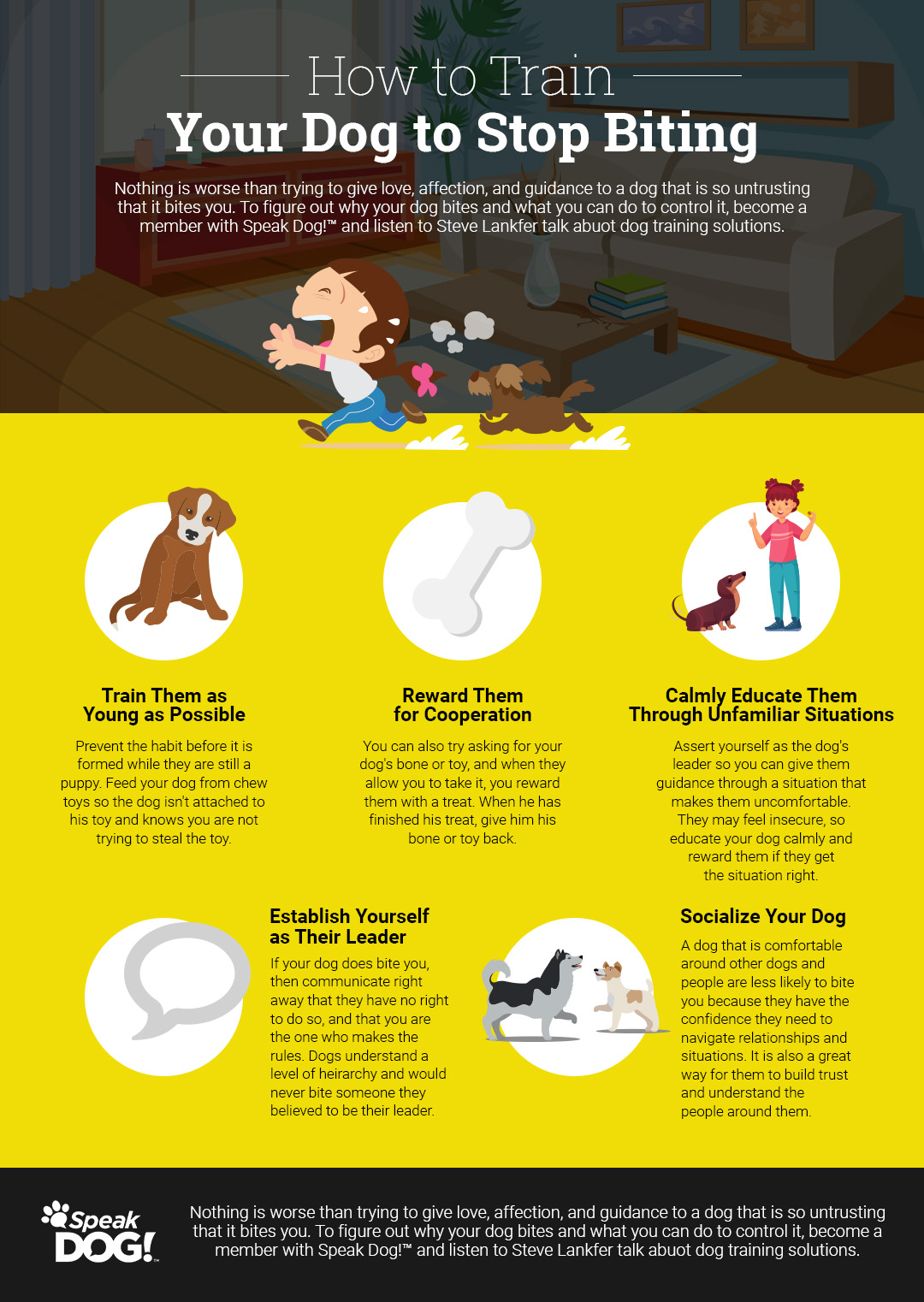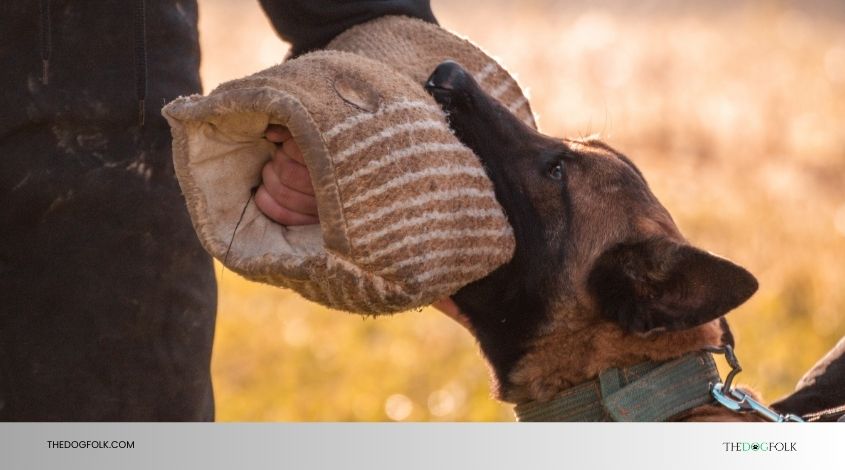Last Updated on September 24, 2025 by Emily Hartman
Are you worried about your dog’s biting habit? You’re not alone.
Many dog owners face this challenge, and it can be both frustrating and concerning. After all, a dog’s bite can turn playful interactions into stressful situations. You want to ensure the safety of your family, friends, and even your pet.
Imagine the peace of mind you’ll have once your furry friend learns to control their bite. In this guide, you’ll discover simple and effective strategies to train your dog not to bite. These methods are not just about discipline but also about building trust and understanding with your canine companion. Ready to create a happier, safer environment for everyone? Let’s dive in and tackle this issue together.

Credit: greensafaris.com
Contents
Understanding Dog Behavior
Training your dog not to bite requires patience and consistency. Use positive reinforcement techniques to reward good behavior. Redirect their attention with toys when they start to bite.
Understanding your dog’s behavior is crucial in training them not to bite. Dogs communicate differently than humans, and understanding their signals can prevent unwanted actions like biting. Observing their body language and recognizing triggers are key steps in fostering a safe environment.
Understanding Dog Signals
Dogs express themselves through various signals, like wagging tails or barking. But did you know that a wagging tail isn’t always a sign of happiness? A stiff wag might indicate tension. Recognizing these signals can be your first step in preventing biting. Pay attention to your dog’s posture, ears, and eyes. If they seem tense or anxious, it’s crucial to address the situation calmly.
Identifying Triggers
Every dog has unique triggers that might lead to biting. These could be loud noises, unfamiliar people, or even certain physical gestures. When my dog Max was a puppy, he was terrified of the vacuum cleaner. It took patience and gradual exposure to help him overcome that fear. Identifying what makes your dog uncomfortable can help you manage their environment effectively.
Responding To Aggression
Aggression is often a cry for help. It’s a signal that something is wrong. If your dog shows aggressive behavior, don’t panic. Ask yourself, what might be causing this reaction? Sometimes a simple change in routine or environment can make a difference. Redirecting their attention to a toy or a game can be a great way to diffuse tension.
Building Trust
Trust is the foundation of any relationship, including with your dog. Spend time with them, show affection, and be consistent in your actions. Trust isn’t built overnight, but each positive interaction strengthens your bond. Consider how you might feel if every interaction with someone was unexpected. Consistency breeds comfort and security. Your dog needs to know they can rely on you.
Seeking Professional Help
If biting persists despite your best efforts, consulting a professional might be necessary. Dog trainers and behaviorists can provide insights and strategies tailored to your dog’s needs. Don’t hesitate to reach out for help. Sometimes an outside perspective can uncover issues you might have missed. Training your dog not to bite is a journey, and every step forward is progress.

Credit: www.youtube.com
Training Techniques
Teaching a dog not to bite involves patience and consistency. Redirect their biting with toys or treats. Praise them when they stop biting. Consistent training sessions help reinforce good behavior.
Training your dog not to bite requires effective techniques. Understanding the right methods can make the process smoother. This section explores key strategies that help teach your dog to behave properly.
Positive Reinforcement
Rewarding good behavior encourages your dog to repeat it. Use treats, praise, or toys to reinforce positive actions. When your dog refrains from biting, offer a reward. This creates a link between good behavior and pleasant outcomes. Dogs love to please their owners, so showing approval motivates them.
Socialization Strategies
Introducing your dog to new environments and people is essential. Socialization helps your dog feel comfortable around others. Organize playdates with other dogs to improve interaction skills. Exposure to different settings reduces fear and aggression. A well-socialized dog is less likely to bite due to anxiety.
Consistency And Patience
Training takes time and requires patience. Keep your commands consistent to avoid confusion. Use the same words and gestures during training. Practice regularly for better results. Celebrate small victories and progress. Patience is key, as every dog learns at its own pace.
Professional Help And Resources
Training a dog not to bite can be challenging. Sometimes, professional help is needed. Experts provide guidance and tailored strategies. Specialized resources are available to assist you. These resources enhance your dog’s learning experience.
When To Consult A Trainer
Observe your dog’s behavior closely. Frequent biting indicates deeper issues. Consult a trainer if biting persists. Trainers offer targeted solutions. They understand dog behavior intricacies. Professional help is crucial for aggressive dogs.
Seek a trainer for complex cases. Expert intervention prevents future problems. Trainers help with specific biting triggers. Consult a trainer if you’re overwhelmed. They guide you through structured training sessions.
Recommended Training Programs
Explore various training programs for dogs. Choose programs with positive reinforcement techniques. Programs should focus on bite inhibition. Look for interactive sessions. Hands-on training is effective for dogs.
Consider certified training programs. Certification ensures quality training methods. Find programs that match your dog’s needs. Some programs offer online resources. Online tools are helpful for remote learning.
Join community-based training sessions. Local trainers understand specific challenges. Community programs foster socialization. Socialization reduces biting tendencies. Participation in these programs is beneficial.

Credit: speakdog.com
Frequently Asked Questions
How Do I Stop My Dog From Biting?
Start with consistent training and positive reinforcement. Reward good behavior. Redirect biting with toys or treats.
What Commands Help Prevent Dog Biting?
Teaching “Leave it” or “No bite” can be effective. Use simple commands. Practice regularly for best results.
Can Socialization Reduce Dog Biting?
Yes, socialization is crucial. Introduce your dog to different people and environments. Builds confidence and reduces fear.
Why Does My Dog Bite During Play?
Dogs often bite when excited. It’s normal behavior. Teach gentle play. Use toys to redirect biting.
Conclusion
Training your dog not to bite takes patience and consistency. Focus on positive reinforcement techniques. Praise good behavior often. Offer treats for calm interactions. Redirect biting with toys. Socialize your dog with other pets and people. This helps reduce anxiety.
Regular exercise also keeps your dog relaxed. Always stay calm and assertive. Dogs sense your mood. Seek professional help if needed. Training takes time, but it’s worth it. A well-behaved dog is a joy. Remember, every dog is unique. Tailor your approach to fit your dog’s personality.
Happy training!

Emily Hartman is a lifelong dog lover, writer, and canine care enthusiast. With years of experience in pet parenting and a deep passion for helping others raise happy, healthy dogs, she shares practical tips, thoughtful advice, and product recommendations to make life better for pups and their people. When she’s not writing, you’ll find her hiking with her rescue lab, Milo, or exploring new dog-friendly spots around town.

